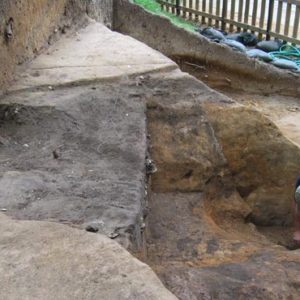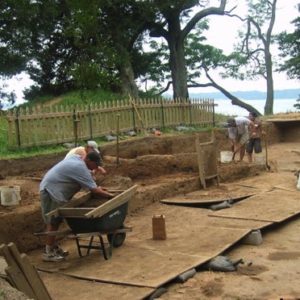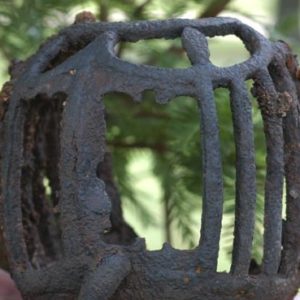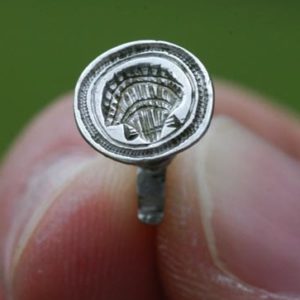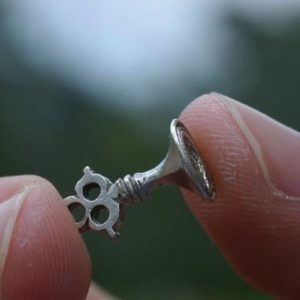The excavation inside the west log wall (palisade) of the fort is gaining momentum as 18 field school students help uncover the remains of a long building, estimated to be over about 90 feet long with three double-sided H-shaped fireplaces, that divide it into at least six rooms, similar perhaps to a London row house or maybe the Governor’s house.
Students are opening up new 10′ x 10′ squares of dirt nearly every day, as they chase the path of one side of the building’s cobblestone foundation, uncovering much of the building site as they go. Recently, they revealed a stretch of the foundation that is opposite and parallel to a line of just four cobblestones that were uncovered earlier in the summer. These four stones appear to mark the other side of the building. This indicates that the building was 18 feet wide, a width that fits traditional Fort Period building dimensions, and places the building 10 feet away from and parallel to the west wall, the same as other earlier buildings inside the fort.
The architecture in this area also appears to be very different from the earth fast mud and stud buildings found at the other end of the fort. Artifacts from the building site include a relatively high concentration of status items compared to other areas of the fort site such as broken Chinese porcelain, delftware wall tiles from the Netherlands, ceramics and glassware in the facon de Venise. One of the more interesting finds is a small silver seal featuring a scallop shell representing St. James of Compostela. These artifacts may indicate that people of relatively high status lived here, and it may also indicate a social class separation in the overall design of the fort.
There are so many objects coming out of the west corner cannon mount (bulwark) trench of the fort that “the dirt seems to be getting in the way of the artifacts,” according to one archaeologist. Visitors can watch as buckets of dirt scraped away from the trench fill are rinsed with water through a fine mesh screen to unveil even the smallest artifacts.
Archaeologists are discovering small bits and pieces of objects lost or discarded by the early settlers, probably sometime between 1607 and 1612, including bits of apothecary jars, Indian pottery, other ceramics, beads, pieces of arms and armor, pipe stems, copper scrap, sturgeon scales (scutes) and bones from food remains. Larger items such as bullet molds, parts from matchlock guns and pieces of armor, and a Lowland Scots basket hilt and pommel have also been found.
related images
- Western bulwark trench
- Archaeologists working near west bulwark
- Lowland Scots basket hilt
- St. James scallop shell silver mold for wax seals
- Another view of St. James scallop shell silver mold



